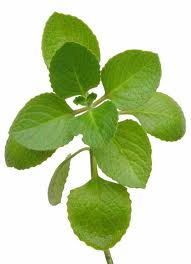 Marjoram, closely related to oregano, is a Mediterranean herb widely used in Italian and French cuisine. The ancient Greeks used marjoram extensively in their cooking as well as medicinal concoctions. Used as a remedy to treat poisons, depression and convulsions, marjoram was also used as a crown placed on top of the heads of newly married couples.
Marjoram, closely related to oregano, is a Mediterranean herb widely used in Italian and French cuisine. The ancient Greeks used marjoram extensively in their cooking as well as medicinal concoctions. Used as a remedy to treat poisons, depression and convulsions, marjoram was also used as a crown placed on top of the heads of newly married couples.
Key Nutrients
Marjoram includes a high amount of fiber, chlorophyll and flavonoids. Flavonoids are a class of molecules which are high in antioxidant content.
Health Benefits
Dietary Fiber – Die
tary Fiber stimulates digestion and peristalsis, helping to relieve indigestion and constipation problems.
Flavonoids – Flavonoids are a class of antioxidants which help to promote healthy cell growth and reduce inflammation. They are also a powerful class of molecules when it comes to reducing the risk of certain cancers.
Season
Marjoram grows from early spring until late summer. With this said, basil can be found fresh year round due to its ease of growth and commercial availability.
Nutrition Information
Per 1 teaspoon (.6 grams):
Calories (cKal): 2
Protein (grams): .08
Total Fat (grams): .04
Carbohydrates (grams): .36
Fiber (grams): .2
Buying and Storing
When buying marjoram, make sure the leaves are crisp, bright green and free from wilting. Store the herb in a sealed bag with a damp paper towel in your refrigerator for up to four days.
Best Way to Add to Diet
Marjoram is a must have in any Italian dish, so add it to your pasta recipes, roasted chicken with tomatoes or putenesca salad. Marjoram chopped in a salad works very well, or try to add this herb to an infused soup and stew.
Marajoram Recipe

 Not Sure What Healthy Foods To Eat?
Not Sure What Healthy Foods To Eat? This week we take a look at one of my favorite healthy foods...the mighty Avocado.
This week we take a look at one of my favorite healthy foods...the mighty Avocado.
No comments yet.